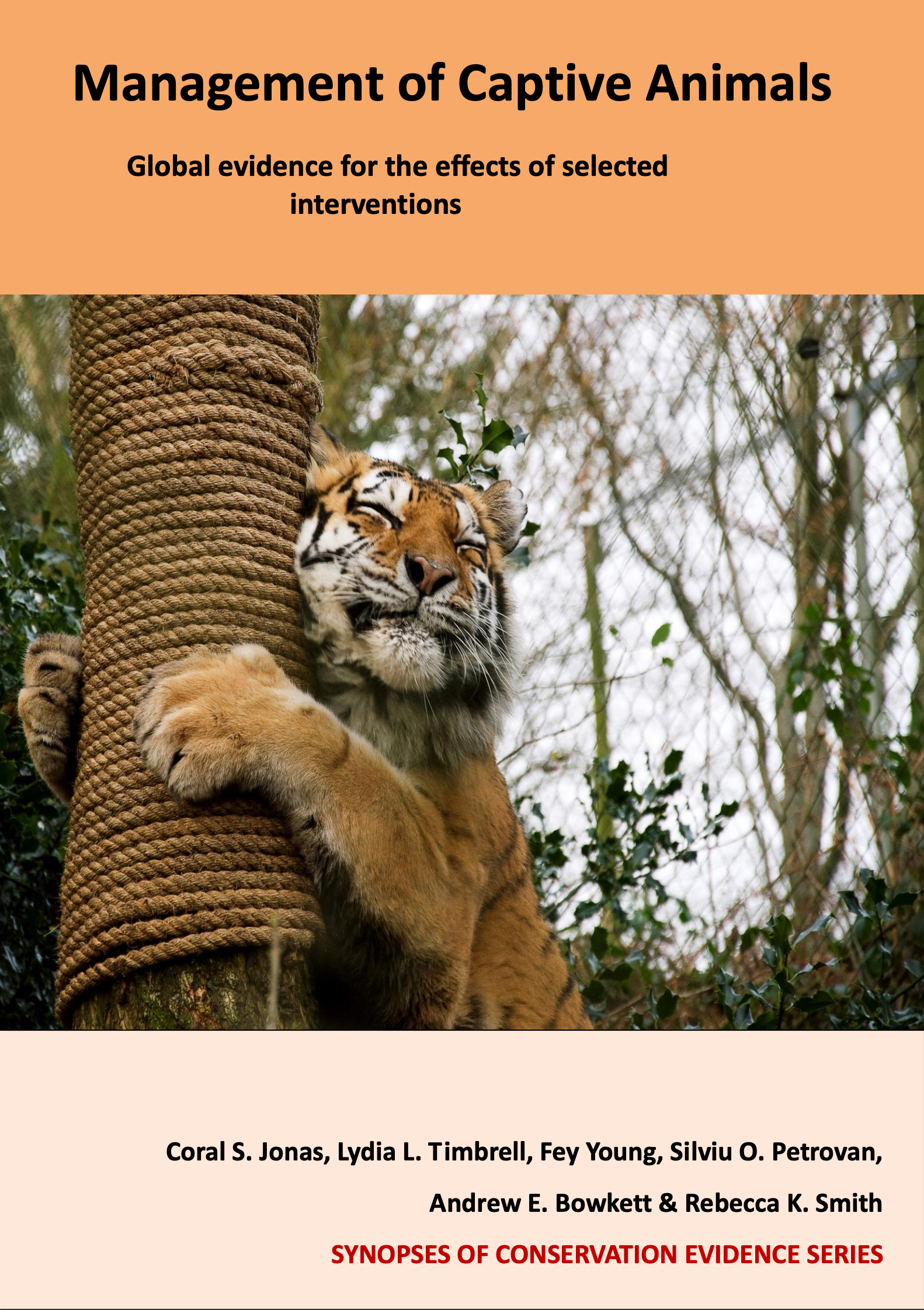Actions to conserve biodiversity
We have summarised evidence from the scientific literature about the effects of actions to conserve wildlife and ecosystems.
Review the evidence from the studies
Not sure what Actions are? Read a brief description.
Search for evidence
e.g. "frogs chytrid"
96 Actions found
Refine
Hide
96 Actions found
Download Actions
| 0 selected |
|
Order results by:
| Action | Effectiveness | Studies | Category | |
|---|---|---|---|---|
|
Carnivores: Supplement meat-based diet with amino acids Action Link |
Unknown effectiveness (limited evidence) | 1 |
|
|
|
Carnivores: Supplement meat-based diet with fatty acids Action Link |
No evidence found (no assessment) | 0 |
|
|
|
Carnivores: Alter food abundance or type seasonally Action Link |
No evidence found (no assessment) | 0 |
|
|
|
Carnivores: Provide food during natural active periods Action Link |
No evidence found (no assessment) | 0 |
|
|
|
Carnivores: Increase variety of food items Action Link |
No evidence found (no assessment) | 0 |
|
|
|
Carnivores: Use of automated feeders Action Link |
No evidence found (no assessment) | 0 |
|
|
|
Carnivores: Alter feeding schedule according to visitor activity Action Link |
No evidence found (no assessment) | 0 |
|
|
|
Carnivores: Hide food around enclosure Action Link |
Beneficial | 6 |
|
|
|
Carnivores: Provide food during visitor experiences Action Link |
No evidence found (no assessment) | 0 |
|
|
|
Carnivores: Feed individuals separately Action Link |
No evidence found (no assessment) | 0 |
|
|
|
Carnivores: Change location of food around enclosure Action Link |
Unknown effectiveness (limited evidence) | 1 |
|
|
|
Carnivores: Feed individuals within a social group Action Link |
No evidence found (no assessment) | 0 |
|
|
|
Carnivores: Hand-feed Action Link |
No evidence found (no assessment) | 0 |
|
|
|
Carnivores: Scatter food around enclosure Action Link |
Unknown effectiveness (limited evidence) | 2 |
|
|
|
Carnivores: Present food in/on water Action Link |
No evidence found (no assessment) | 0 |
|
|
|
Carnivores: Present food frozen in ice Action Link |
Likely to be beneficial | 4 |
|
|
|
Carnivores: Present food inside objects (e.g. Boomer balls) Action Link |
Likely to be beneficial | 4 |
|
|
|
Carnivores: Provide live vertebrate prey Action Link |
Unknown effectiveness (limited evidence) | 2 |
|
|
|
Carnivores: Provide live invertebrate prey, including in feeding devices Action Link |
Unknown effectiveness (limited evidence) | 1 |
|
|
|
Carnivores: Provide devices to simulate live prey, including sounds, lures, pulleys and bungees Action Link |
Trade-off between benefit and harms | 3 |
|
|
|
Carnivores: Use food as a reward in animal training Action Link |
No evidence found (no assessment) | 0 |
|
Download Actions
| 0 selected |
|

Management of Captive Animals - Published 2018
Captive Animal Synopsis
Watch this search
If you are familiar with RSS feeds, please click the button below to retrieve the feed URL:
RSS feed for this searchIf you are unfamiliar with RSS feeds, we would suggest reading this BBC article.
Unfortunately, due to the number of feeds we have available, we cannot provide e-mail updates. However, you could use tools such as Feed My Inbox to do this for you.
What are 'Individual studies' and 'Actions'?
Individual studies
An individual study is a summary of a specific scientific study, usually taken from a scientific journal, but also from other resources such as reports. It tells you the background context, the action(s) taken and their consequences.
If you want more detail please look at the original reference.
Actions
Each action page focuses on a particular action you could take to benefit wildlife or ecosystems.
It contains brief (150-200 word) descriptions of relevant studies (context, action(s) taken and their consequences) and one or more key messages.
Key messages show the extent and main conclusions of the available evidence. Using links within key messages, you can look at the paragraphs describing each study to get more detail. Each paragraph allows you to assess the quality of the evidence and how relevant it is to your situation.
Where we found no evidence, we have been unable to assess whether or not an intervention is effective or has any harmful impacts.





)_2023.JPG)














